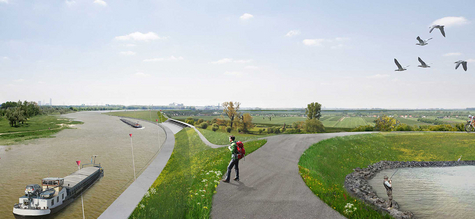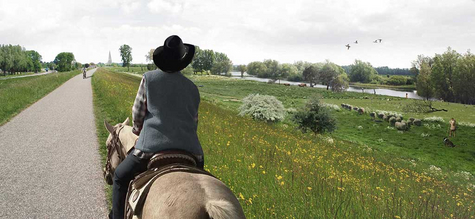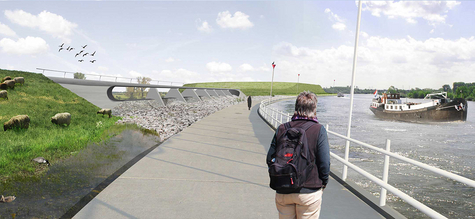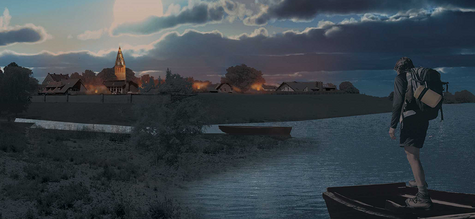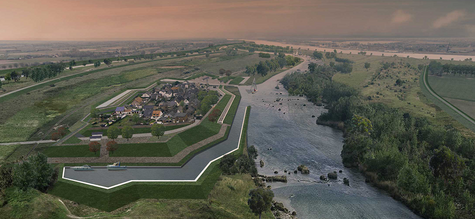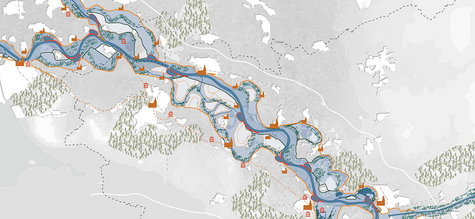Robbert Jongerius
- Contact
- LinkedIn
Nationaal Rivierpark Niederrhein
Climate change is expected to continue in Europe and the damage caused by river floods will have increased fourfold by 2050. This requires a timely and structural intervention in the river basins of the large European rivers. In order to reduce the flood risk, the Netherlands has opted for river widening instead of dyke heightening following the floods of 1995. By moving the dyke at many spots, the Dutch rivers have been given more room.
In spite of the success of the Room for the River project, the Rhine delta is still not safe. Recent research has shown that most river dykes do not comply with the safety standards. The standards have been raised and the ‘Piping’ failure mechanism has been incorporated into the calculations. The result is is that yet another round of costly dyke strengthening awaits the Netherlands. In addition, there appears to a great risk of river floods in the Netherlands from the German Lower Rhine (Niederrhein) due to the very poor state of the German dykes just across the border.
Niederrhein National River Park
The Lower Rhine Plain, between Duisburg and the Arnhem-Nijmegen urban region is the key area for the high-water problems in the Netherlands and the German Ruhr region. The 18.000 hectares of potential retention room in the area can lead to a reduced water level of half a metre in the Rhine, and the dykes in the area must be massively redeveloped. The result of such an intervention is that the Netherlands will have to strengthen the dykes less intensively and that the German Ruhr region and the Rhine delta will become water safe.
Niederrhein National River Park is the structural solution for the long term. A land reservation of this size is, however, almost unthinkable. That is why the river area between Duisburg and the Arnhem-Nijmegen urban region will be given the status ‘National park’. This will attract more visitors and investors to the area, which will lead to a financial impulse and the status can prevent these areas becoming built-up. The Niederrhein National River Park is functional, recreational, natural and innovative. The enormous scale of the project is an opportunity to address large spatial agendas and to integrate them into the park design. The four agendas, water safety, ecology, recreation and energy, provide the building blocks for the park. The aim of the project is an energy-neutral, recreational nature reserve within a system of climate-proof dykes, which connects and protects the urban regions of Duisburg and the Arnhem-Nijmegen urban region. The river park consists of 13 retention areas that will be developed on a phased basis over a period of 30 years. The Schenkenschans retention area, situated on the Dutch-German border, is the pilot project. The building blocks of the park design will be tested here and the border project symbolises the cooperation between the Netherlands and Germany that will be maintained until the completion of the park in 2050.
The park will comprehensively designed based on spatial quality, the environment and water safety. The experience with process, design and execution that has been gained in the Netherlands with the Room for the River project can be utilised in this project. There is also a better forecasting in terms of time and budget. The total project will begin with a shared master plan, concrete building blocks and a clear goal: An attractive river park between Duisburg and the Arnhem-Nijmegen urban region.
Commission members: Lodewijk van Nieuwenhuijze (mentor), Jana Crepon, Patrick McCabe. Additional members for the examination: Peter Lubbers, Roel Wolters.

